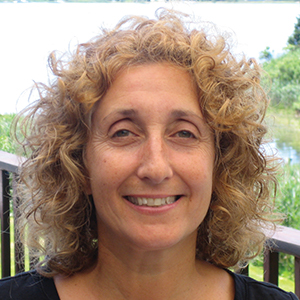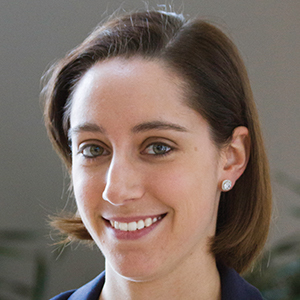Why should I be an ASBMB Student Chapter adviser?
Initiated in 2000 by J. Ellis Bell, who is at the University of San Diego and the University of Richmond, the American Society for Biochemistry and Molecular Biology Student Chapters program now boasts 110 chapters and 2,000 student members. Formerly known as the ASBMB Undergraduate Affiliate Network, the Student Chapters program is an ever-growing community dedicated to supporting undergraduate BMB research, education and outreach. It also provides an active network for its 200 associated faculty advisers.
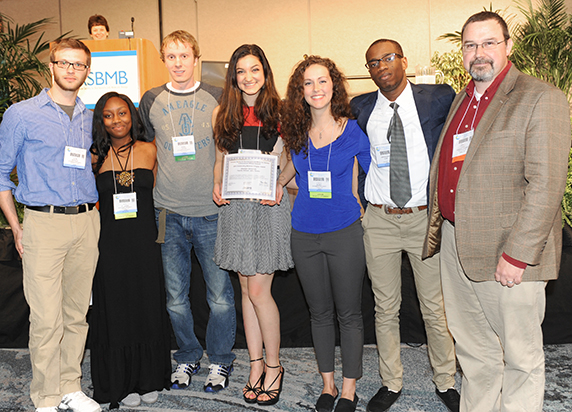 Otterbein University Student Chapter faculty adviser John Tansey, far right, and his students at the 2014 ASBMB Annual Meeting. The Otterbein chapter won the ASBMB’s Outstanding Chapter award in 2014.ACTIONFOTO CONVENTION PHOTOGRAPHY
Otterbein University Student Chapter faculty adviser John Tansey, far right, and his students at the 2014 ASBMB Annual Meeting. The Otterbein chapter won the ASBMB’s Outstanding Chapter award in 2014.ACTIONFOTO CONVENTION PHOTOGRAPHY
Who are the ASBMB Student Chapters advisers?
Student Chapters faculty advisers work at more than 100 different colleges and universities across the U.S. and Puerto Rico. They are faculty members at small private colleges and large research universities. Their student clubs are independently established or built around existing clubs and range from BMB-focused groups to amalgams of biology and chemistry clubs. Although many advisers are junior faculty, a large number are tenured, senior faculty.
What do the chapters do?
Chapters meet regularly, giving students a chance to support each other’s academic progress and work on chapter events. Each chapter elects leaders, and the ASBMB offers an array of resources for chapters and their leaders, including support for travel to the annual meeting and help organizing regional conferences, conducting outreach and participating in science fairs. The society also presents an Outstanding Chapter award each year and inducts exceptional chapter members in Chi Omega Lambda, the ASBMB Honor Society.
Guiding tomorrow’s scientists
The primary role of faculty chapter advisers is to guide the club members. Clubs vary in size from just a few members to 50 students or more, and, although each club is coordinated by the elected officers, the faculty adviser mentors the club in a variety of ways. Advisers may help plan events, recommend outreach activities, or consult on submissions of abstracts and the assembly of posters. They also mentor students on job and graduate school applications, interviews and the ASBMB accreditation exams.
Jeff Boles is an adviser for the club at Tennessee Tech in Cookeville, Tenn. He says the role is an opportunity to help students “become excellent leaders and explore new opportunities such as research." Boles adds, "I don’t run their club — they run their club and I truly advise. If they get into trouble, I bail them out. That’s happened a time or two over the years. That’s active learning, for sure … I enjoy being their adviser as I get to watch them grow in more ways than factual knowledge.”
Serving the students, college and profession
Co-curricular activities teach students in many ways, and a student chapter is no exception.
John Tansey, chapter adviser at Otterbein University in Westerville, Ohio, says, “Being a chapter adviser gives me a closer interaction with the students in the major who are not in my classes or research lab … (and it) gives us a structure through which we can conduct cocurricular activities that address many learning outcomes that may not otherwise fit into the curriculum such as outreach, teamwork and leadership.”
Student chapters also strive to meet the mission of the ASBMB Student Chapters organization by supporting the research and educational efforts of chapter members, the institution at large and the scientific community. Outreach activities also extend this mission beyond the institution, raising awareness about science to the general public.
Professional development and networking
As a member of the ASBMB Student Chapters, the faculty adviser has access to networking and professional development opportunities. A reception for advisers is held each year at the ASBMB annual meeting, where faculty from across the Student Chapters organization meet, exchange ideas and develop relationships. Funding and guided support for regional undergraduate research conferences helps advisers learn how to organize symposia, hone their mentorship skills and build collaborations with other faculty members. Participation in the varied educational and professional-development initiatives supported by the ASBMB (e.g., regional educational conferences, special symposia and grant-writing workshops) provides additional venues for faculty members to interact and opportunities for them to grow.
The role of chapter adviser itself fosters faculty development. Guiding students in educational and outreach activities and in the process of science builds mentorship skills; hones time management, organizational and communication abilities; and provides an intellectual challenge.
Kirsten Fertuck, chapter adviser at Northeastern University, says, “One of the things that I really appreciate about the chapter structure is that it provides clear steps and deadlines associated with professional-development opportunities for both the adviser and the students. We all greatly benefit from having defined periods within the academic calendar in which we are actively discussing outreach projects, regional meetings, the honor society, and the certification exam — it keeps us organized and working toward common goals!”
Interested in learning more about the ASBMB Student Chapters program? Visit www.asbmb.org/studentchapters.
Enjoy reading ASBMB Today?
Become a member to receive the print edition monthly and the digital edition weekly.
Learn moreFeatured jobs
from the ASBMB career center
Get the latest from ASBMB Today
Enter your email address, and we’ll send you a weekly email with recent articles, interviews and more.
Latest in Opinions
Opinions highlights or most popular articles
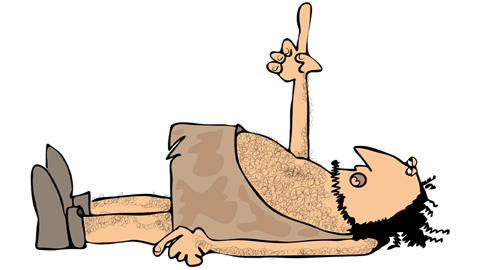
A paleolithic peer review
You might think review panels have only been around for the last century or so. You would be mistaken.

Early COVID-19 research is riddled with poor methods and low-quality results
The pandemic worsened, but didn’t create, this problem for science.

So, you went to a conference. Now what?
Once you return to normal lab life, how can you make use of everything you learned?
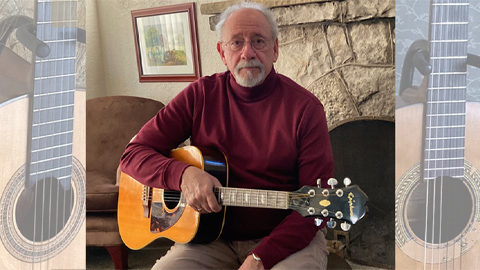
My guitar companion
A scientist takes a musical journey through time and around the world.

Catalyzing change and redefining purpose
To mark Women’s History Month, Sudha Sharma writes about her journey from focusing on her own research program to being part of a collaborative COVID-19 project.
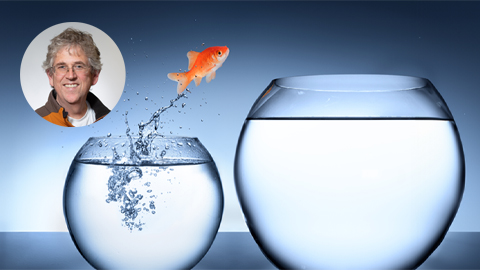
The power of sabbaticals
To mark Women’s History Month, Nicholas Rhind writes about learning techniques in other researchers’ labs that empower the work in his own.

